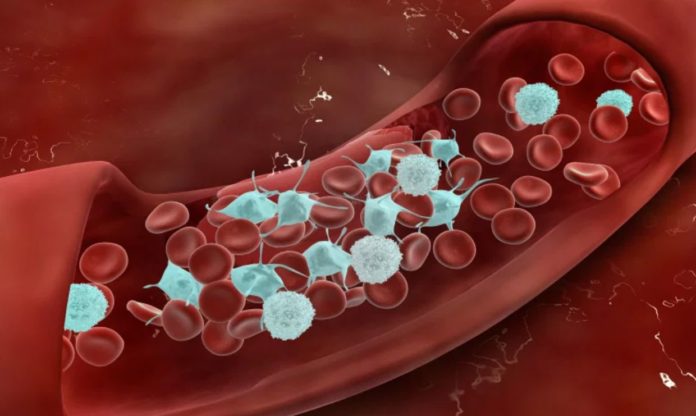A blood clot is one of the more surprising symptoms of COVID-19 that many patients, including younger ones, have suffered from infection.
The Blood clots have in some cases led to dangerous blockages in the lungs, caused strokes and even death, even in people without a history of circulatory conditions.
Although anyone can be affected by a blood clot, certain risk factors, such as hospitalisation, pregnancy, cancer, and some types of cancer treatments can increase a person’s chance of developing one.
- Does This Mean We Stopped Being Animal and Started Being Human Due to ‘Copy Paste’ Errors?
- The One Lifestyle Choice That Could Reduce Your Heart Disease Risk By More Than 22%
- Aging: This Is What Happens Inside Your Body Right After Exercise
- Immune-Boosting Drink that Mimics Fasting to Reduce Fat – Scientists ‘Were Surprised’ By New Findings
- Gun Violence in America: What They Don’t Talk About at the Debate
A clot that forms in a deep vein in the body is known as deep vein thrombosis (DVT).
When part or all of that clot breaks off and travel to the lungs it can be life threatening and is called a pulmonary embolism (PE).
Other risk factors, such as limited movement due to extended travel or bed rest, a personal or family history of blood clots, or injury to a vein, can increase a person’s chance of developing a blood clot.
Improve blood flow in your legs when sitting for long periods of time, following bed rest, or when traveling for more than four hours by moving your legs as much as possible and exercising your calf muscles, suggested the Centers for Disease Control and Prevention (CDC)
CDC listed the ways to help prevent a blood clot which include:
- Get up and walk around every two to three hours if you are able to and if space allows
- Do seated leg stretches
- Raise and lower your heels while keeping your toes on the floor
- Raise and lower your toes while keeping your heels on the floor
- Tighten and release your leg muscles
- If you’re at risk for a Deep Vein Thrombosis (DVT), talk with your doctor about taking medication or wearing graduated compression stockings.
If a person has developed a deep vein thrombosis (DVT) in one of their legs or arms, it’s sometimes normal for that limb to stay slightly swollen after treatment.
After a clot in your lungs (a pulmonary embolism, or PE), a person might also feel mild pain or pressure in the chest.
Experts warn if a new or worse pain, pressure, or cramping in the calf which may develop.
That could signal a new DVT with shortness of breath or fainting being signs of another PE.
Important factors to be aware of regarding clots include:
- A clot can form anywhere, but it’s most likely to develop in the leg or pelvis.
- You can have DVT and not know it, especially if the clot is small.
- The most common symptoms of DVT are swelling in an arm or leg, tenderness that isn’t from an injury, and skin that feels warm and is red in the area of the clot.
- A clot usually forms in just one leg or arm, not both.
- You’re at greater risk for a pulmonary embolism if you have deep vein thrombosis or a history of DVT.
- Like DVT, you can have a pulmonary embolism and not know it.
Stay physically active and do everything possible to avoid immobility, advised Dr Samuel Goldhaber, a senior cardiologist and expert on VTE at Harvard-affiliated Brigham and Women’s Hospital.
He continued: “That means being on a heart-healthy exercise program, with some sort of exercise, such as walking, for at least 30 minutes a day, six days a week.
- Does This Mean We Stopped Being Animal and Started Being Human Due to ‘Copy Paste’ Errors?
- The One Lifestyle Choice That Could Reduce Your Heart Disease Risk By More Than 22%
- Aging: This Is What Happens Inside Your Body Right After Exercise
- Immune-Boosting Drink that Mimics Fasting to Reduce Fat – Scientists ‘Were Surprised’ By New Findings
- Gun Violence in America: What They Don’t Talk About at the Debate
“Eat a heart-healthy diet and maintain a lean body weight. Being overweight is a major risk factor for PE.
“Clotting problems can be hereditary, so if the condition runs in your family, make sure your doctor knows about it.
“In the aftermath of surgery or an accident, the clotting system is on high alert; it’s trying to protect you.
“Find out ways you can reduce your risk of developing a blood clot by asking the surgeon, ‘What are you going to do to prevent me from having a DVT?'”
